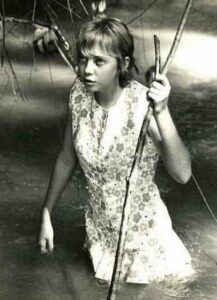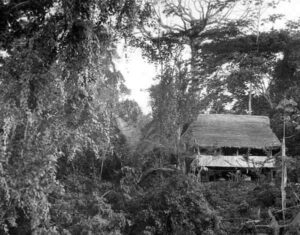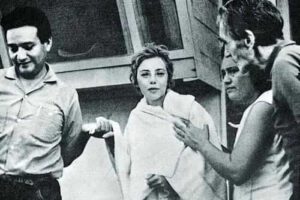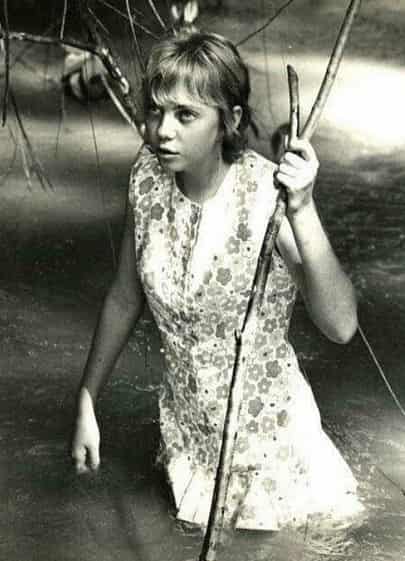How Juliane Koepcke Survived the Crash of LANSA Flight 508

Juliane Koepcke’s story is one of the most remarkable survival tales in aviation history.
In 1971, at the age of 17, Juliane became the sole survivor of LANSA Flight 508, which crashed in the Peruvian rainforest. Her survival journey, marked by incredible resilience, determination, and a bit of luck, has fascinated people worldwide and serves as a testament to human endurance against all odds.
The Crash of LANSA Flight 508
On December 24, 1971, LANSA Flight 508, a Lockheed L-188A Electra turboprop plane, took off from Lima, Peru, bound for Pucallpa, a town in the Peruvian Amazon. Juliane was traveling with her mother, Maria Koepcke, a renowned ornithologist, to visit her father, who was working in the rainforest. The flight was supposed to be routine, but shortly after takeoff, the plane encountered severe thunderstorms, with intense turbulence and lightning strikes.
The plane was struck by lightning, causing an engine to explode. The aircraft broke
apart mid-air, disintegrating at an altitude of about 10,000 feet. Juliane, still strapped to her seat, fell through the air, plunging into the dense Amazon rainforest. The other 91 passengers and crew members on board perished in the crash, making Juliane the sole survivor.
Surviving the Fall
Juliane’s survival from such a height is almost miraculous. Experts suggest that the dense foliage of the rainforest, coupled with the seat row acting as a parachute, helped to slow her descent. She hit the ground hard but was relatively unharmed compared to the devastation around her. Juliane suffered a broken collarbone, a deep cut on her arm, and a concussion, but her injuries were not life-threatening.
When she regained consciousness, she was disoriented and alone. She had lost her glasses and one shoe, which made navigating the jungle even more challenging. Despite the pain and shock, she knew she had to find help, drawing on her knowledge of the rainforest that she had learned from her parents, both of whom were biologists.
Ten Days in the Jungle
Juliane’s journey through the jungle lasted ten days, a period during which she relied on her instincts and survival skills. With no food, she survived on a few sweets she found in the wreckage. She knew that following water was her best chance of finding civilization, so she began to walk along a stream, hoping it would lead her to a larger river and, eventually, people.

The rainforest presented constant challenges. Juliane had to deal with insects, parasites, and the relentless tropical heat. Her injuries were worsening; her wounds became infected, and she had maggots burrowing into her arm. Despite these horrors, she pressed on, using the river as her guide.
Juliane’s knowledge of the jungle, gained from her upbringing in Peru, proved invaluable. She recognized poisonous plants and knew which animals to avoid. She stayed close to the riverbank, keeping herself hydrated and hoping each day would bring her closer to rescue.
Rescue and Recovery
After ten harrowing days, Juliane stumbled upon a small boat moored on the riverbank. Exhausted and delirious, she waited, afraid she might be dreaming. She used the boat’s gasoline to clean her wounds, recalling her father’s advice that gasoline could be used to remove maggots.

The next day, loggers who worked in the area found her. They were shocked to see a young girl in such a state, covered in wounds and insect bites. The loggers took Juliane to their camp, where they provided her with food, water, and basic medical care. They transported her by boat to a nearby village, and from there, she was airlifted to safety and reunited with her father.
Juliane’s recovery was slow but steady. Despite the physical and emotional scars left by the ordeal, she went on to lead a remarkable life. She became a biologist, following in her parents’ footsteps, and eventually returned to the crash site to honor the memories of those who lost their lives.
Lessons from Juliane Koepcke’s Survival
Juliane Koepcke’s survival is often attributed to a combination of factors: the randomness of nature, her knowledge of the rainforest, and an incredible will to live. Her story reminds us of the importance of resilience in the face of overwhelming odds. Despite being a teenager with severe injuries in one of the most inhospitable environments on Earth, Juliane never gave up hope.
Her survival also underscores the significance of basic survival skills. Understanding the natural environment and having the presence of mind to use the resources at hand played a crucial role in keeping her alive. Juliane’s story continues to inspire many, showcasing the extraordinary strength of the human spirit.

Today, Juliane Koepcke’s story remains a powerful testament to survival against all odds. Her experience has been documented in books and documentaries, reminding the world of the incredible journey of a young girl who survived a plane crash and navigated the perils of the Amazon jungle alone.

